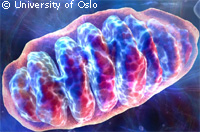THE MITOCONDRIAL DNA

Progress in genetics has led to the elaboration of techniques capable of establishing the identity of a person and the existence of biological relationships between two or more subjects. DNA testing can be performed using two types of DNA present in human cells: nuclear DNA or mitochondrial DNA.
Nuclear DNA is located in the nucleus of cells and is the most commonly used DNA to perform tests such as the paternity test, or test to identify a person.
The mitochondrial DNA, indicated as mtDNA (mitochondrial DNA) is localized in mitochondria, organelles located in the cytoplasm of all human cells, whose function is to provide energy to the cell. Each mitochondrion contains DNA that is maternally inherited (non-Mendelian legacy) as during the fertilization process the sperm mitochondria are marked with ubiquitin, a protein that binds to other proteins that need to be degraded. As a result, the mitochondrial genome of the offspring will be almost the same as the maternal one, because the mutation rate of the mtDNA is very low, so it is inherited from generation to generation with minimal changes.
From what is stated, MtDNA analysis is useful when maternity test is finalized to determine whether brothers and sisters are children of the same biological mother or to verify a kinship relationship that comes from the mather (uncles, aunts, grandmothers, etc.).
Mitochondrial DNA testing is particularly useful when you have no the opportunity to analyze the mother’s DNA, because thanks to the transmission of the maternally hereditary characteristics, the grandmother or other maternal relative will have the same mtDNA of the mother.
Mitochondrial DNA analysis has also been widely used in the forensis science field, as the mtDNA is much more resistant to the impact of environmental factors than nuclear DNA, proving to be less subject to chemical and physical contamination.
A representative example is the case of identifying a burned body in relation to which mtDNA analysis appears as a viable alternative to traditional nuclear DNA analysis.
For its structural characteristics, therefore, the mtDNA is particularly suitable in cases of poor or degraded samples.
The mitochondrial DNA limit is that it can not be used to specifically identify who is the maternal relative, as such subjects have equal mtDNA sequences.
A cura di Studio Galileo
